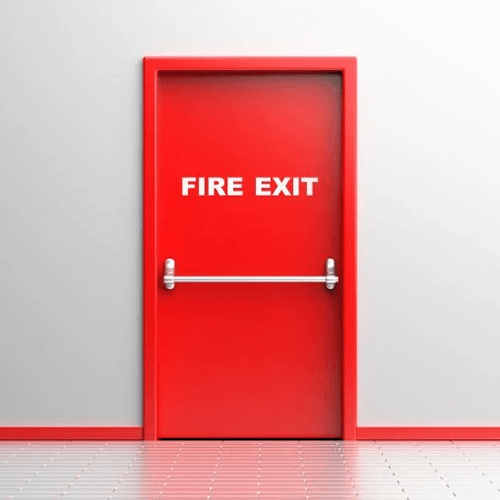
Fire-rated doors are complex due to their hundreds of moving parts. They have a thought-out design that helps protect any building's occupants and the structure from extensive fire damage. Because of the multiple moving parts, it's easy for those parts to malfunction, making a fire door out of compliance with fire codes.
To help keep every commercial door in compliance and ready for an emergency, the National Fire Protection Association (NFPA) created a list of provisions for all fire doors. One of those requirements is the fire rate labels.
A fire-rated label may be made from paper, plastic, or metal; however, you may also find the information printed on the door. Each label has information regarding that specific fire door and frame. Information found on this label includes:
The manufacturer's phone number may also be found on the label so you can learn more about the original construction of the door. These labels indicate that the openings of the door and frame have been tested and passed per the standards.
Sometimes having only a fire door doesn't cut it. Depending on its location, it may need to be smoke resistant and pass additional testing during the inspection. This extra test is dictated by the UL 1784: Standard for Air Leakage Tests of Door Assemblies and Other Opening Protectives.
Having an S-label doesn't indicate a particular fire rating. Instead, it shows that the fire door assembly complies with the requirements of UL 1784.
A third-party inspector is responsible for verifying that your fire doors contain the proper labeling. This gives construction companies, building owners, and local authorities the confidence that these doors will operate as designed during a fire emergency. These labels also trace the door's movement through the construction process.
Each fire door label has unique numbers near the door frame's end to provide additional information about the door. When necessary, the original fire door certificate and specification can be sourced, allowing on-site checks against the door's original standards.
This process allows inspectors and other authority figures to track any components that need replacing. It will also help identify which parts are compatible with the original door and what testing is required to maintain compliance.
The NFPA 80 code states that every fire door must have a fire-rated label that remains legible throughout the door's lifespan. It must be clearly visible and attached to the fire door and frame.
In some situations, the label is applied to additional door components, such as the frame, gaskets, hinges, and door panel. Regardless of how many labels, the entire door assembly has a single rating.
Since NFPA 80 states the label must be legible and visible, there are a few things you must not do to remain in compliance.
Never paint over the fire label. If the fire label is painted over, it can be illegible. Your door will be out of compliance until the situation is rectified. Paint is difficult to remove, so if you paint your door, protect the label with painter's tape. Once the painting is complete, you can remove the tape, revealing a visible, legible fire door label.
There is one exception to this rule. When a label is etched directly into the door, it is possible to paint over it. SDI 188 and SDI 122 permit embossed labels to be painted over, assuming all the information remains visible and legible after the painting is finished.
Removing the label for any reason makes your fire door noncompliant with NFPA 80. When there is no label, there is nothing to indicate that the door has been inspected to ensure it meets the required safety standards. Your fire door could be deficient, putting your occupants and building at risk.
If you are missing a fire-rated door label, immediately contact a qualified inspection agency to amend the situation.
Are you looking for a new fire-rated door to remain in compliance with NFPA codes? Contact CDF Distributors to learn more about our products.
December 20, 2022
Wayne Foreman